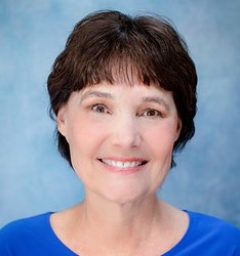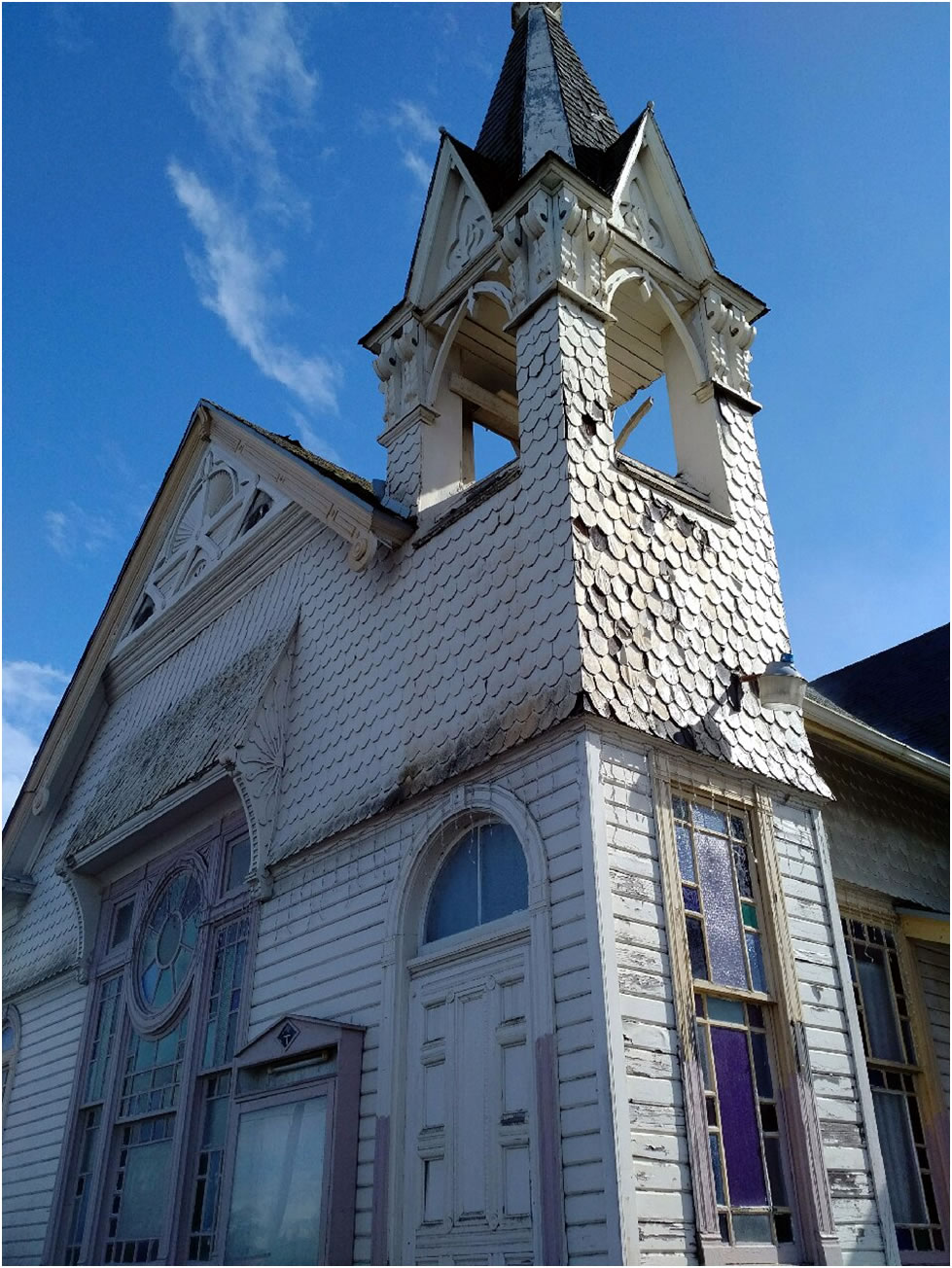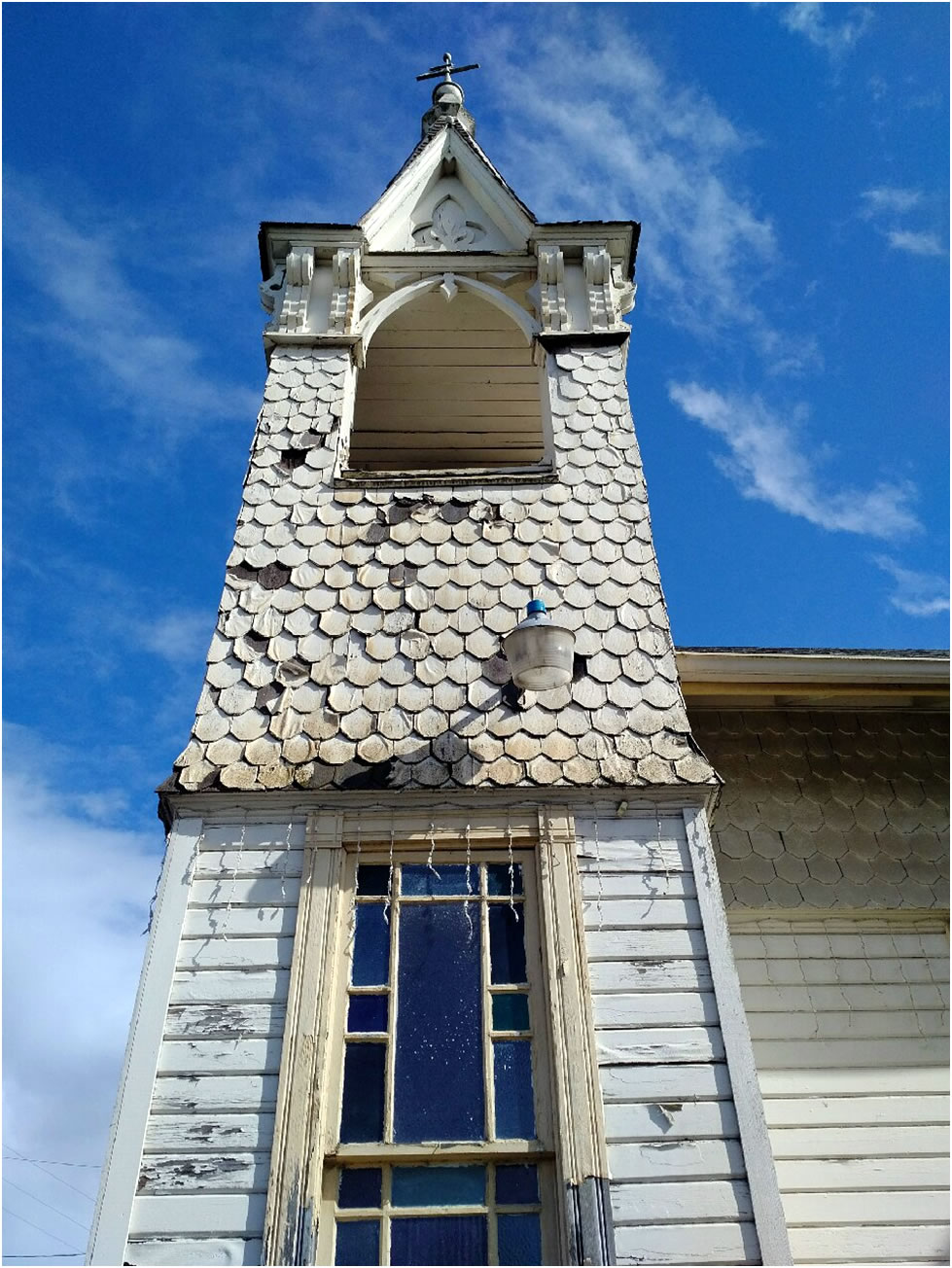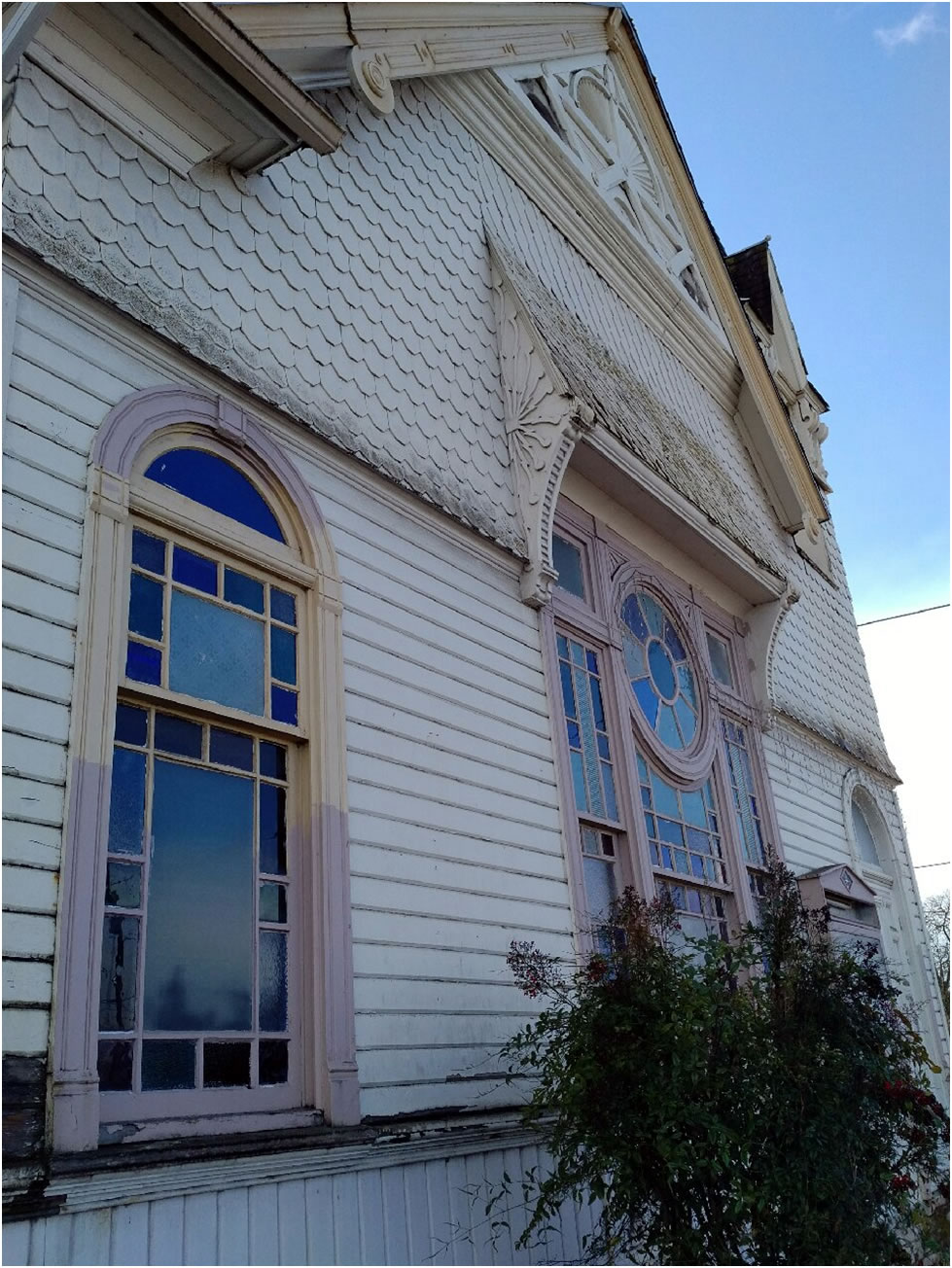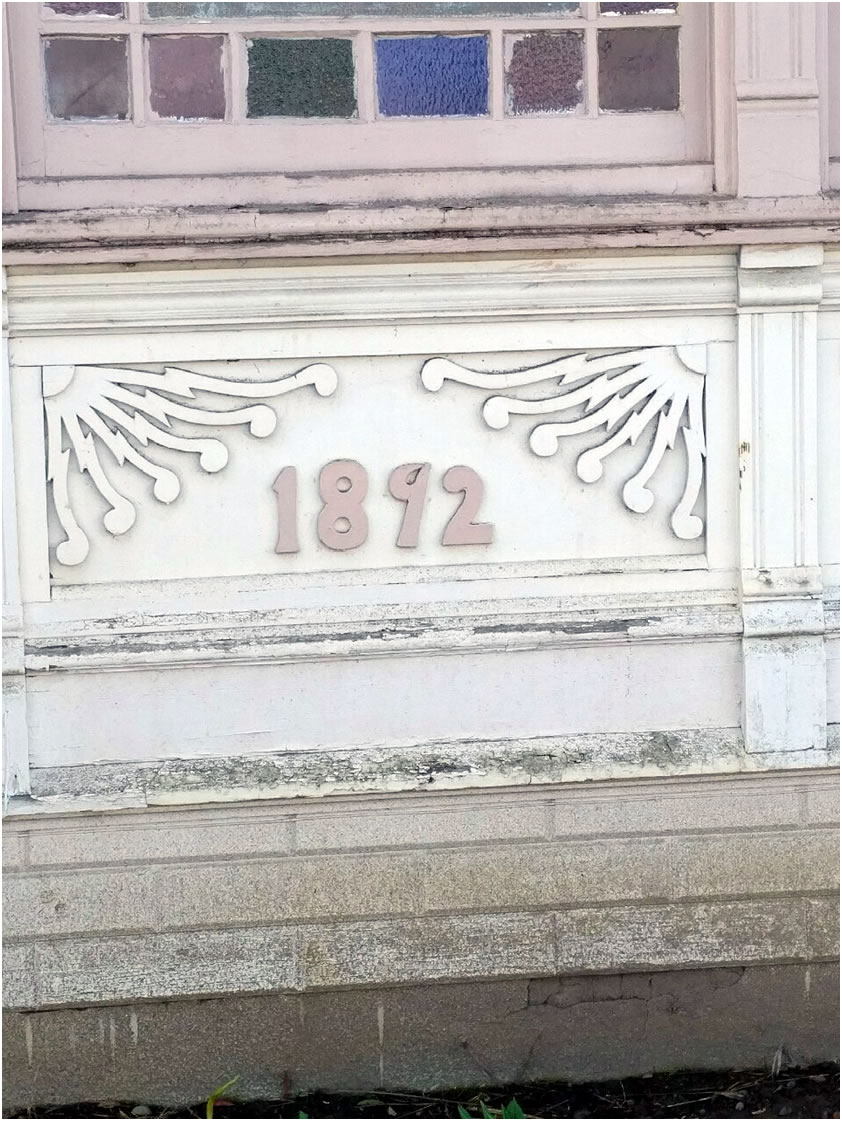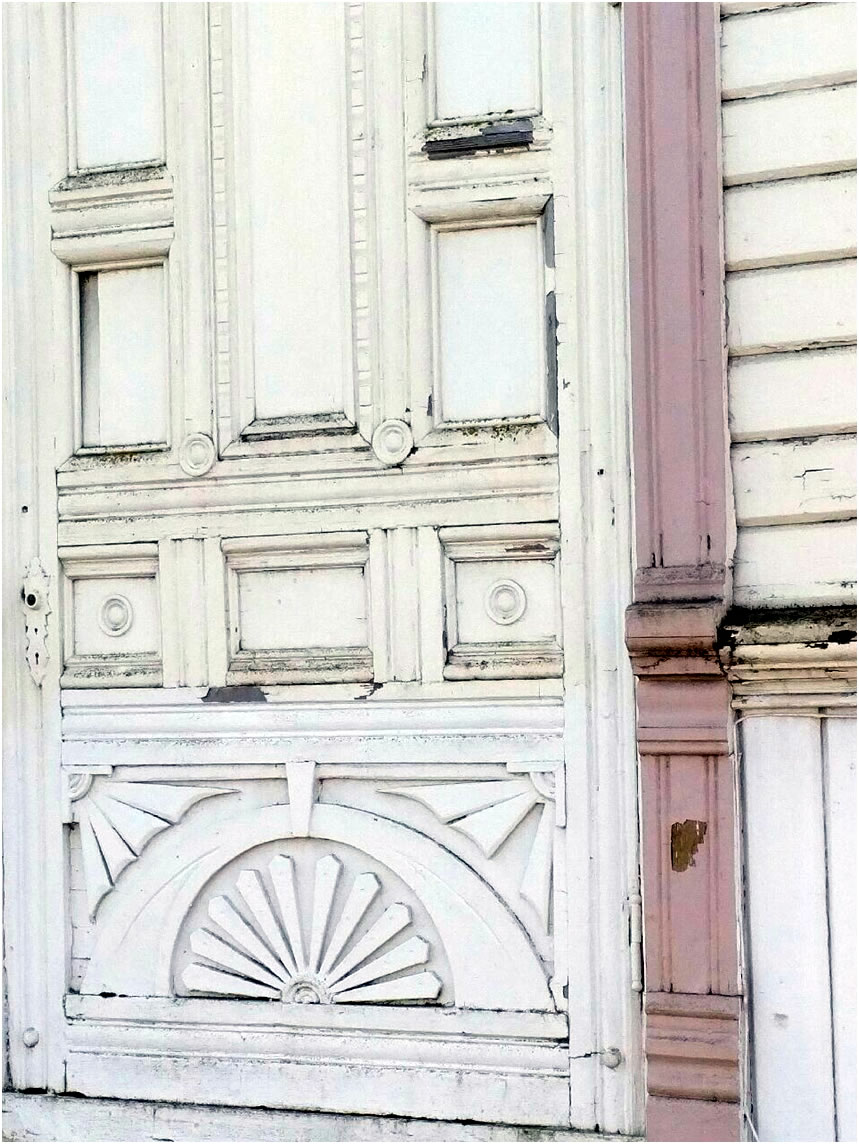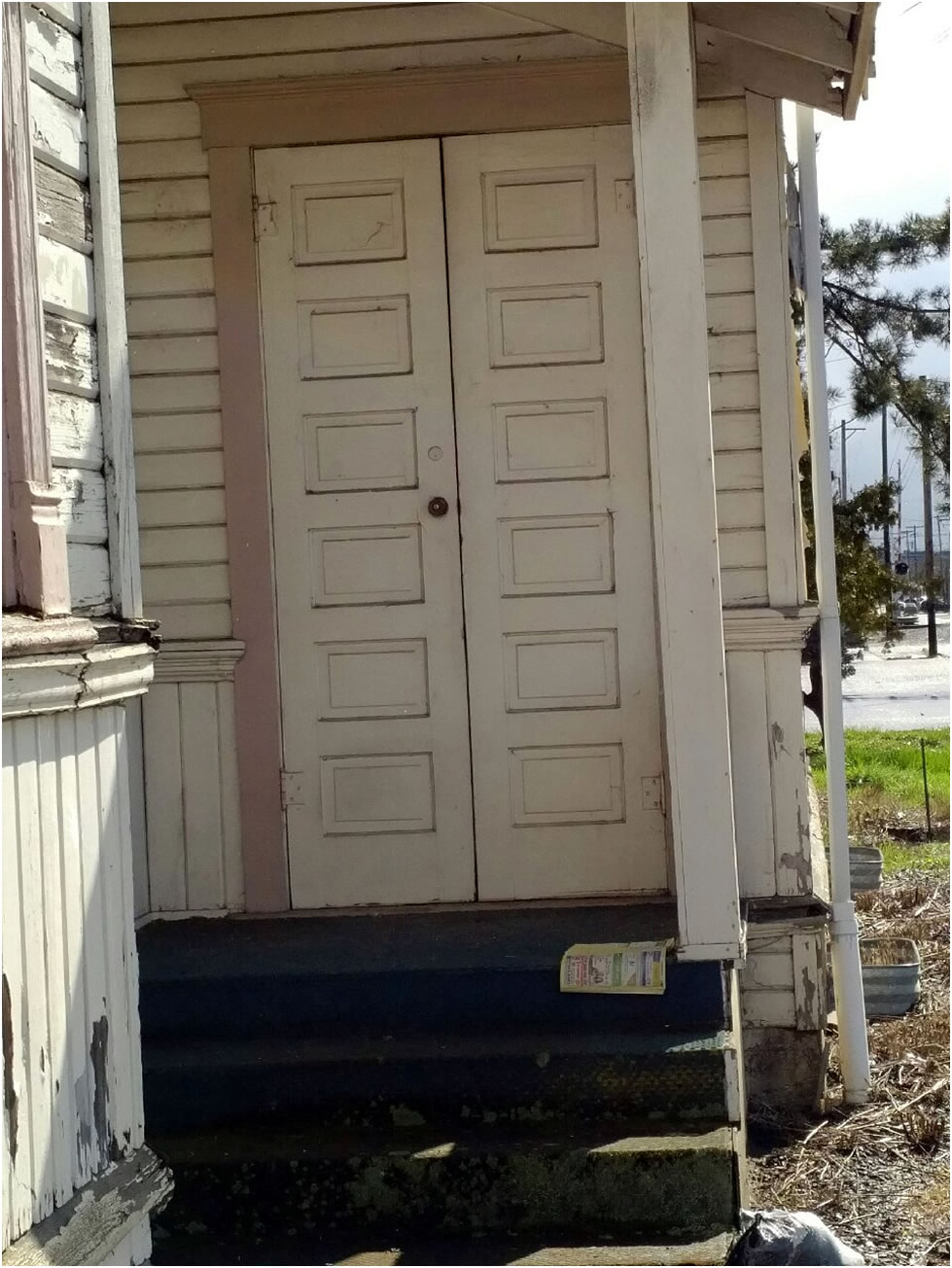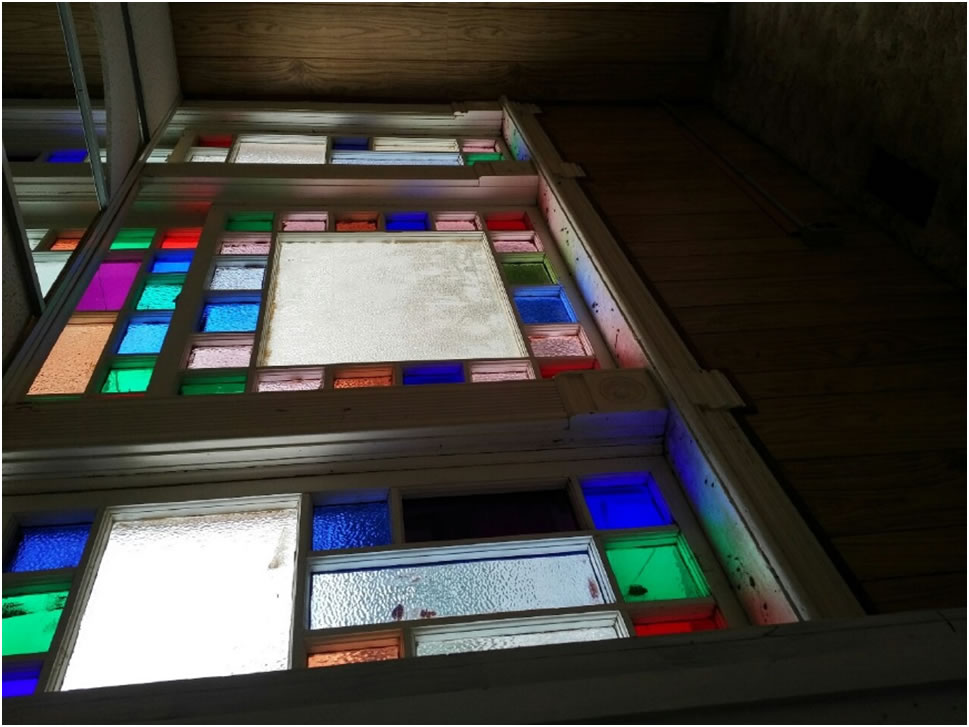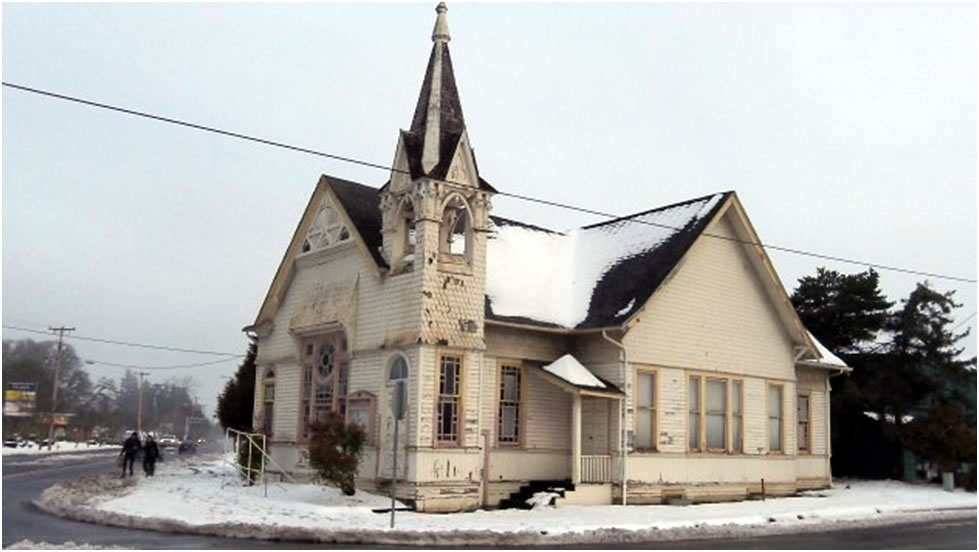
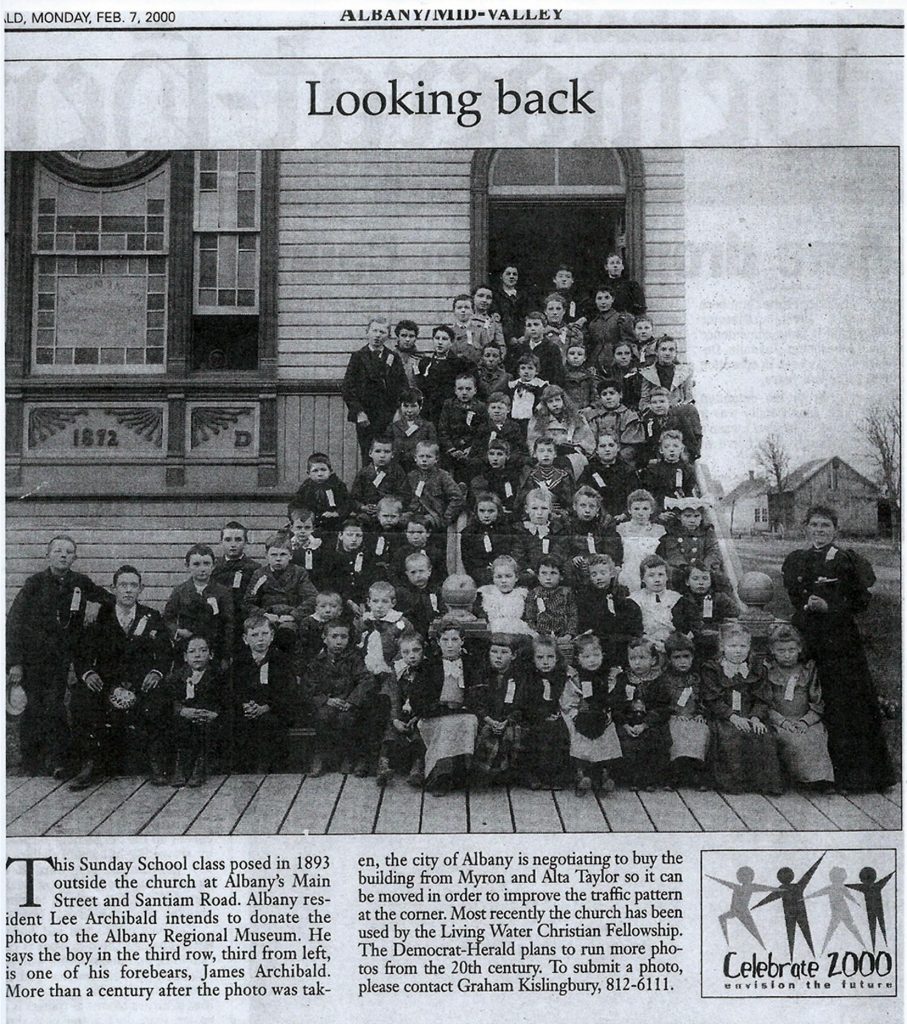
The Historic Cumberland Church on Main Street
Built in 1892 and one of four wooden historic churches in Albany, Oregon
The 1997 City of Albany’s Transportation System Plan identified the need for a future street connection, Fourth Avenue SE to Santiam Road, in order to lessen the traffic congestion at Second Avenue and Main Street.
In 2000, the City of Albany acquired the historic 1892 Cumberland Presbyterian Church to plan for a future street realignment construction project. Albany did not have any roundabouts at that time and Oregon had very few. The transportation system plan did not identify any future roundabouts.
The acquisition price for the church was $150,000, which was the appraisal price at that time. I was a city councilor back then and we did our due diligence in making sure this was a fair price. By law, governments cannot spend more than the appraisal price for properties. Do keep in mind this was 18 years ago and the church was in far better shape than it is today. The funds to purchase the church came from the street fund. The City Council’s plan was to find a new location for the church.
The City during these years rented out the facility to provide a source of revenue for maintenance. However, there was never enough interest from private parties in renting the church for an amount that would provide enough revenue to pay for full preservation of the interior and exterior of the building.
The plan to reconstruct Main Street and design for vehicle and pedestrian safety changed when the transportation plan switched to a roundabout at Second/Third Avenues and Main Street. The roundabout no longer required the need to move the church since there was enough public right of way in the street for the overall project’s design and reconstruction. This project was completed in 2014.
As time went by, the question was raised to the City Council about what to do with the church. Councilors decided in February 2014 to go out for a request for proposal to seek someone to purchase the church and land or relocate the church. There were a few offers that never came to fruition. Then the City Council attempted to find an owner again, in 2016, with another request for proposal and still no success as the reason was it was challenging for any potential buyer due to the overall cost for restoration.
In January 2017, I asked the City Council for approval to form a Mayor’s Historic Properties Work Group to seek a future for the church. I suggested having members from our Landmarks Advisory Commission (Kerry McQuillan, Larry Preston and Bill Ryals), Central Albany Revitalization Area Board (Rich Catlin and Mark Spence), Parks and Recreation Board (Russ Allen and Will Sheppy) and two Ward 1 City Councilors (Dick Olsen and Mike Sykes), along with myself. The Council gave the go ahead to form the group.
The work group met over a course of six months. The group began by touring the inside of the church March 6, 2017. A public tour was held at a later date and another 50 people attended that tour, as several enthusiasts of historic preservation were also eager to get a look at the inside of the church. The work group was able to see above the false interior ceiling where there was an original dome-shaped ceiling. The group saw where the church was separated in the middle and an addition was built in 1920 to enlarge the sanctuary space. The restrooms were in the basement. The basement was not up to current building codes as the ceiling was too low. The basement had a kitchen and many additional rooms. The condition of the church had good bones, but clearly needed restoring.
The group was informed of other modifications to the building, such as the main entrance to the church was converted from the interior, but the exterior door was still intact. Yet this main entrance was inaccessible due to the close proximity to the sidewalk.
After this meeting and tour, many local residents and the community at large was hopeful the City would finally find a future for this significant historic church.
The work group’s first meeting to start discussing the best course for the church and to determine if it had good bones to be restored. The full consensus from the work group was to save the church and move forward with a full restoration.
Then the work group evaluated whether to restore on site or move the church to another site.
The reasons to not restore the church on its current location were:
- The church would need to be raised to construct a new basement. The existing basement is too low to meet today’s building and safety codes. This would also include the need for new restrooms to meet ADA standards and the accessibility for ingress and egress to the basement. The basement alone added a significant amount to the overall costs of restoration improvements.
- The existing location of the church would only accommodate seven parking spaces and one would need to be designated for a handicap space. There was no on-street parking along the perimeter of the church. The only on-street parking would be in the neighborhood across Main Street on 4th Avenue.
- The original front door entrance could not be restored as the entrance would need to be brought up to ADA standards and the door was too close to the sidewalk. The inability to access the front entrance prevents a full restoration of the church.
- The costs of restoration could be $350,000-$750,000, which all depends on the scope of the restoration and future use of the facility. The workgroup evaluated what the cost would be to cover the debt, which was too high of a cost for a private residence. In order for the restoration to be feasible, there would most likely need to be public assistance, such as urban renewal funds.
- There was discussion about converting the building to a restaurant or business, but its limitation would be the lack of parking for a business to succeed at the current location. Also, comparing it to a location inside the downtown district which has plenty of on-street and public parking spaces available.
The reasons to move the church to another location:
The group started discussing whether to relocate the church to another site so the church could be fully restored to a location where there would be plenty of parking to make sure the church has a sustainable use for the future.
The group looked at vacant lots and the land from Timber Linn Memorial Park, places in North Albany and the Lyon Street off-ramp. The farther distance from the church adds to the cost of a move. Timber Linn Memorial Park was too high of a cost for a move. North Albany would require the church to be dismantled to lower the height. The Lyon Street off-ramp has too many overhead utility lines to move. The discussion led to a shorter distance for the move or to a small lot for a residence. A private residence was ruled out as not cost effective enough with the move and restoration. The City owns lot on Water Avenue and Hill Street that was the most desirable along with the lot across from Hackleman Park.
As these two lots were discussed the cost savings for Hackleman Park was more desirable.
Reasons for the decision to move the church at Pine Street and Santiam Road, across from Hackleman Park:
- The choice to relocate and restore the church at Pine Street and Santiam Road was the best as no utility lines had to be moved and was a short distance over the railroad tracks. Plus, this lot was larger than any of the other options.
- The church could be converted to a city-owned community center, since the only space available is the Senior Center.
- This location was in the urban renewal district and would be eligible for urban renewal funds, if needed for moving or restoration.
- Hackleman Park and the skate park have always had challenges for safety and a bordering community center would provide some needed security for the park.
- The location would be an added amenity for future uses of Hackleman Park, which has a rising amount of activity from Pickleball users.
- The restoration would save on costs as a basement would not be needed and the church could be placed on a concrete slab, where the existing site would have needed a basement replacement.
- The most qualified moving company in the state assessed the church and said the church is solid and can be moved in one piece.
- The moving cost was estimated to be about $60,000. Even if a new community center building was proposed for the Pine Street and Santiam Road lot, there would be the cost for an architect to design a building. This savings would pay for the move.
- This location also was large enough to have an outdoor plaza area and flower garden. Local Master Gardeners could be asked to adopt the garden.
- This location would have plenty of space to construct off-street parking and there is additional parking around the perimeter of Hackleman Park.
- This location would enhance this neighborhood and be an attractive use for drivers traveling from the east and entering the Hackleman District. Even if citizens never use the community center, they would benefit from viewing the restored church while driving or walking by.
The work group’s final recommendation was unanimous to move the church to the city-owned lot at Pine Street and Santiam Road and to work on the specifics. All members agreed, except for Councilor Sykes, that urban renewal funds should be considered for assistance with the cost of moving the church. Also, all members were hopeful that donors would contribute in the restoration of the church, and a community center would be a city-wide attraction along with a needed asset for the community.
In August of 2017, I updated the City Council on the recommendation and some councilors were adamant of not wanting any city funds to be spent on the church.
Another update to the City Council in late 2017 came again with resistance from some councilors to assist with funding to move the church. That resistance prompted the neighborhood to get active. Several citizens started a petition seeking support to have the City move the church for a community center. In January of 2018, the Save Historic Main Street Church Facebook page sponsored an ad for three weeks to ask the question should the church be restored for a community center and over 250 people responded with a yes.
On June 11, 2018 the City Council was presented with a petition from the Willamette River East Neighborhood group seeking support to have the City pay to move the church in order for the group to seek donations for restoration. The sale of the land would fund the moving cost. The majority of the City Council did not want to pay for a move and several did not care to even save the church. The majority of the Council wanted the sale of the land to go back to the street fund. Councilors Olsen and Kopczynski, along with myself, wanted urban renewal funds or parks system development charges to pay for the move, but others did not agree.
This church has deteriorated from the lack of care and the current and former City Council’s reluctance to preserve this historic structure. The higher cost for restoration is the owner’s fault and before the City acquired the church.
Since this church has lacked care and has deteriorated for the past eighteen years, this message creates a lack of citizen confidence the City will actually restore the church. This makes it challenging for citizens to donate funds for the restoration. If the church was moved to its new location, then citizens would gain confidence that the restoration is moving forward.
In summary, in order to have a sustainable future for the Cumberland Church and to provide a benefit for the whole community, should be to move the church across from Hackleman Park. Albany would have a community center that could hold 200 people and another 200 people could gather outside for weddings, funerals, retirement parties, family reunions and other public and private events.
I do not feel it is fair to expect a community center to be funded by donations from citizens only. There has never been a public facility fully funded by citizens’ donations in Albany and it is disingenuous to expect a public facility not to have public funds supporting at least some of the costs.
Summary by Sharon Konopa
June 2018
This story was written by retired news reporter Cathy Ingalls, May 2014
The reason two Albany families – the Hacklemans and the Burkharts – chose the name Main Street for a road more than 10 blocks east of the city center probably will never be known, several historians say.
Naming the street, however, can be traced to a feud the Hacklemans and Burkharts had with the other early arriving Monteith family. The already brewing animosity with the Monteiths intensified with the American Civil War.
The Monteiths and their supporters wanted the city to develop just south and east of the confluence of the Calapooia and Willamette rivers. But the Hacklemans and Burkharts preferred a location farther to the east, where many of them lived.
As a result, the Monteiths and their friends picked First Avenue for their main street in the downtown and the other two families selected Main Street to the east.
Many Democrats and Southern sympathizers lived in the Main Street area, while Whigs and later Republicans tended to congregate in what is now the downtown.
Those in the eastern half of the city even opened a school they called Dixie.
Starting about 1850, residents to the east began calling their part of town New Albany, later changing the name to Takenah, which some say is a Kalapuya word for where rivers come together or “hole in the ground.”
Then, in 1854, the east-siders persuaded the state legislature to name the entire town Takenah, but two years later, the Monteiths got the name changed back to Albany.
Albany historian Jerry Brenneman has said he believes the rift between the two factions de-escalated after the Civil War as both sides combined efforts to entice the railroad to lay tracks to Albany, which all agreed would benefit everyone.
Main Street, he said thrived until after World War II, when people began moving to the outlying parts of Albany.
Brenneman recalls that the Main Street of the 1940s boasted a drug store with a soda fountain, two grocery stores, a cleaners, a gas station and motel, a car dealership, a wrecking yard, a large cannery and the Linger Longer Tavern, which is still open.
He also remembers that a large house that belonged to the pastor of the Lutheran church sat where the 7-Eleven is now, and Whitaker Paint & Wallpaper started out as a hardware and paint store.
The most imposing building still on the road is Grace Presbyterian Church, which was built on a 5,250-square-foot lot in 1892 at 401 Main St. S.E. The early pastors were affiliated with the Cumberland Presbyterian Church, whose leaders often had a less formal education than their counterparts.
Many of the church members in Albany were from the South, but there were serious divisions in the church during the Civil War.
As the Albany church membership increased, the building was separated and a new section was built at right angles in the middle.
The church continued as the Cumberland Presbyterian Church until the Great Depression, when many members transferred to a Presbyterian Church downtown.
In 2000, the city bought the Main Street church site and a few nearby parcels for $150,000 anticipating a major street reconstruction project that is now underway.
The church on Main and Whitespires on Fifth Avenue, which was built in 1891, are the two oldest church buildings in Albany.
More information about the history of early Albany can be discovered at the Albany Region Museum, 136 Lyon St. S.
Cumberland Church building research
401 S. Main Street, Albany, Oregon
RESEARCH SUMMARY
5/1/1892-? Cumberland Presbyterian Church
First Service held 5/1/1892
Named changed to Grace Presbyterian 1905-1909
1909-1931 Grace Presbyterian Church
Name changed from Cumberland Presbyterian
1905-1909
Last service unknown circa 4/1931
7/8/1931-10/6/1968 Grace Mennonite Church
Renovations underway 7/8/1931, services being performed at this time
Last known service performed 10/6/1968
11/16/1968-7/10/1987 Faith Bible Church
First Service held in building 11/17/1968.
Last Service apparently 7/12/1987
7/18/1987-12/15/1991 Valley Christian Center: Foursquare Church
First Service 7/19/1987
Last service apparently 12/15/1991
12/20/1991-11/19/1993 Sequoia Baptist Church (S. B. C.)
Joe Franell, Pastor
Moved into building by 12/20/1991
Building still owned by Faith Bible Church
Moved to 2110 Pacific Blvd by 11/26/1993
11/26/1993-12/24/1993 No listing in ADH “Mid-valley Directory of Churches
12/31/1993-5/2/1999 Living Water Christian Assembly
No article about move-in found between 12/24/1993 and 12/31/1993
First service at 1099 Queen Ave on 5/2/1999.
401 Main still a rental
5/7/1999-12/7/2001 3-month snapshots ADH Mid-Valley directory of churches
NO LISTING
5/27/2005 Church on the Rock
Unknown when moved into building
Unknown when left building
RESEARCH INFORMATION
1892 Cumberlin Presbyterian Church (yes the spelling is as in the original)
SE Cor. 4th & Main
Source: Albany City Directory 1892
3/18/1892 Article “Home and Abroad” Thursday
“The contract for the seating of the new U P church has been let to Mr Wm Frum.
The seats will be of hard wood.”
Source: States Rights Democrat (newspaper), 3/18/1892 Albany, Oregon
4/15/1892 Article “Home & Abroad” Thursday
“The new U P church will be completed this week all but the seating of it.
The interior is handsome and convenient.”
Source: States Rights Democrat (newspaper), 4/15/1892 Albany, Oregon
5/6/1892 Article “Local Record”
“DEDICATION-On Sunday the new CP church in the eastern part of the city was dedicated according to the ceremonial form prescribed by the rules of that church. The little church was filled to overflowing. A very interesting sermon was preached by Rev Longbottom of Brownsville. The peopled of that part of the city are fortunate in securing in their midst the establishment of a church whose mission is to assist in ringing up the young in the way they should go and turning the minds of men away from sin.”
Source: States Rights Democrat (newspaper), 5/6/1892 Albany, Oregon
1905 Cumberland Presbyterian Church
4th Source: Albany City and Linn County Directory 1905
1/1910 Grace Presbyterian Church
Minister Elliott, Rev J. C. of the Grace Presbyterian Church
Source: Directory: Home Telephone Company: Linn and Benton Counties 1/1910
12/21/1928 Grace Presbyterian Church at 4th and Main
Source: ADH 12/21/1928 “Churches”
11/14/1930 Grace Presbyterian Church no address
Rev. J. E. Blair
Source: ADH 11/14/1930 “Churches”
1/9/1931 Grace Presbyterian Church no address
Pastor R. A. Buchanan
Source: ADH 1/9/1931 “Churches”
1931 Cumberland Presbyterian purchased by Grace Mennonite.
Pastor Clyde Dirks
Source: APL vertical file Albany Churches Minnonite ADH 6/9/1967
illus. “The Grace Mennonite Church…”
7/8/1931 Article “Albany Has New Church”
“The Grace Presbyterian church of Albany which was Disorganized several weeks ago is to be known as the Grace Mennonite Church, an entirely new organization. The church is being organized under the general conference of the Mennonite church of America. Complete organization is to be perfected in the near future, it is said.
At present a minister from Portland is to preach part of the time until a permanent minister can be secured. The Sunday school is being conducted with Elmer Widmer as superintendent.
Rev. J. E. Blair, a well known Presbyterian minister, is teaching the Bible class of adults. The building is being remodeled both inside and out and will be placed in first class condition, it is said.”
1933 (circa) Grace Presbyterian Church purchased by Mennonites and building became Grace Mennonite Church.
GREAT ARTICLE even with wrong date (1931 not 1933) and wrong name (article says Cumberland Presbyterian)
Source: APL vertical file Albany Churches Mennonite ADH 6/21/1968
“The Church By the Side Of the Road”
1936 Grace Mennonite Church
Source: Albany City Directory 1936
8/25/1948 Centennial issue of DH listed 22 churches. Follow-up needed.
Source: APL vertical file Albany Churches ADH 8/25/1948 “Albany Famous For Many Fine Churches”
1952 Grace Mennonite Church
Source: Albany, Oregon City and Rural Directory 1952
1958 Grace Mennonite, East 4th Ave & Main
Rev Herbert King
Source: APL vertical File Albany Churches “Albany’s Churches Invite You To Worship” Albany Ministerial Association
8/2/1963 Grace Mennonite Church photo
Build 1892 and Cumberland Presbyterian until 1931. Pastor Clyde Dirks.
Source: APL vertical file Albany Churches Mennonite ADH illus.
8/2/1963 “Grace Mennonite”
3/1966 Cumberland Presbyterian Church built 1892.
Source: APL vertical file Albany Churches ADH “Church Architecture Reflects Other Trends of the Times”
10/6/1968 Grace Mennonite Church last known service in 401 S Main building.
Pastor Clyde Dirks
Source: ADH 10/4/1968 “World-Wide Communion To Be Observed Sunday”
10/5/1968-11/14/1968 No articles found, no exhaustive search made (later)
11/15/1968 Faith Bible Church purchased church. Church organized in June.
Source: ADH article 11/15/1968 “New Church Organized”
11/16/1968 Faith Bible Church to hold services 11/16/1968 in new building.
Source: ADH article “Albany Directory of Churches”
3/8/1969 Faith Bible Church purchased building from Grace Mennonite church circa 11/1968. Unknown when services started in the building.
Pastors E. R. Burnette, Stuart Dahl, and Ben Peters.
Source: APL vertical File Albany Churches ADH “Faith Bible Church”
1978 Faith Bible Church
Rev E. R. Burnette, Pastor
Source: APL vertical File Albany Churches ADH “Albany Area Directory of Churches”
6/16/1978 Faith Bible Church
Pastor E. R. Burnette
Source: APL vertical File Albany Churches ADH unknown title
5/25/1979 Faith Bible Church
Pastor E. R. Burnette
Source: APL vertical File Albany Churches ADH unknown title
8/4/1984 Faith Bible Church
Pastor E. R. Burnette
Source: APL vertical file Albany Churches ADH “Mid-valley directory of churches”
2/7/1986 Faith Bible Church
Gary Rhodes, Ministries Coordinator
Source: APL vertical File Albany Churches unknown title
7/10/1987 Faith Bible Church
R. Burnette, pastor
Source: ADH 7/10/1987 “Albany Area Directory of Churches”
7/18/1987 Valley Christian Center
Foursquare Church
Albany Boy’s and Girl’s Club
Dan Ferguson, pastor
Source: ADH 7/18/1987 “Albany Area Directory of Churches”
NOTE: No article found between 7/10/1987 and 7/18/1987
7/25/1987 Valley Christian Center
Foursquare Church
Dan Ferguson, pastor
Source: ADH 7/25/1987 “Albany Area Directory of Churches”
12/2/1988 Valley Christian Center
Foursquare Church
Ed Sweet, Pastor
Source: ADH 12/2/1988 “Albany Area Directory of Churches”
12/6/1991 Valley Christian Center
Foursquare Church
Ed Sweet, Pastor
Source: ADH 12/6/1991 “Albany Area Directory of Churches”
12/13/1991 Valley Christian Center
Foursquare Church
Ed Sweet, pastor
Source: ADH 12/13/1991 “Albany Area directory of churches”
12/20/1991 Sequoia Baptist Church (S. B. C)
Joe Franell, pastor
Source: ADH “Sequoia Baptist in new location”
11/19/1993 Sequoia Baptist Church (S.B.C.)
Joe Franell, pastor
Source: ADH 11/19/1993 “Mid-valley directory of churches”
11/20/1993-12/24/1993 No listing ADH “Mid-valley directory of churches
12/31/1993 Living Water Christian
Larry Vogel, pastor
Source: ADH 12/31/1993 “Mid-valley directory of churches”
undated Youth on Fire’
All Youth Church affiliated with Living Water Christian Assembly.
Youth Pastor Ben Pruett
Source: ADH undated
4/23/1999 ADH 4/23/1999 “Mid-valley directory of churches
Living Water Christian Assembly
Larry Vogel, pastor
5/2/1999 Living Water Christian Assembly first service at 1099 Queen Avenue
401 SE Main Street still a rental
Source: ADH 4/30/1999 “Living Water makes move to new location”
5/7/1999 No listing
Source: ADH 5/7/1999 “Mid-valley directory of churches”
8/6/1999 No listing
Source: ADH 8/6/1999 “Mid-valley directory of churches”
11/19/1999 No listing
Source: ADH 11/19/1999 “Mid-valley directory of churches”
12/3/1999 No listing
Source: ADH 12/3/1999 “Mid-valley directory of churches”
2/7/2000 Photo, 1893, Sunday School class in Cumberland Presbyterian Church
Source: APL vertical file Albany Churches ADH “Looking Back”
(NOTE: planned to be donated to regional museum)
3/3/2000 No listing
Source: ADH 3/3/2000 “Mid-valley directory of churches”
6/2/2000 No listing
Source: ADH 6/2/2000 “Mid-valley directory of churches”
9/1/2000 No listing
Source: ADH 9/1/2000 “Mid-valley directory of churches”
12/2/2000 No listing
Source: ADH 12/2/2000 “Mid-valley directory of churches”
3/2/2001 No listing
Source: ADH 3/2/2001 “Mid-valley directory of churches”
6/1/2001 No listing
Source: ADH 6/1/2001 “Mid-valley directory of churches”
9/7/2001 No listing
Source: ADH 9/7/2001 “Mid-valley directory of churches”
12/7/2001 No listing
Source: ADH 12/7/2001 “Mid-valley directory of churches”
5/27/2005 Church on the Rock
Senior Pastor Don Cunningham
Source: APL vertical file ADH Albany Churches “Mid-valley directory of churches”
